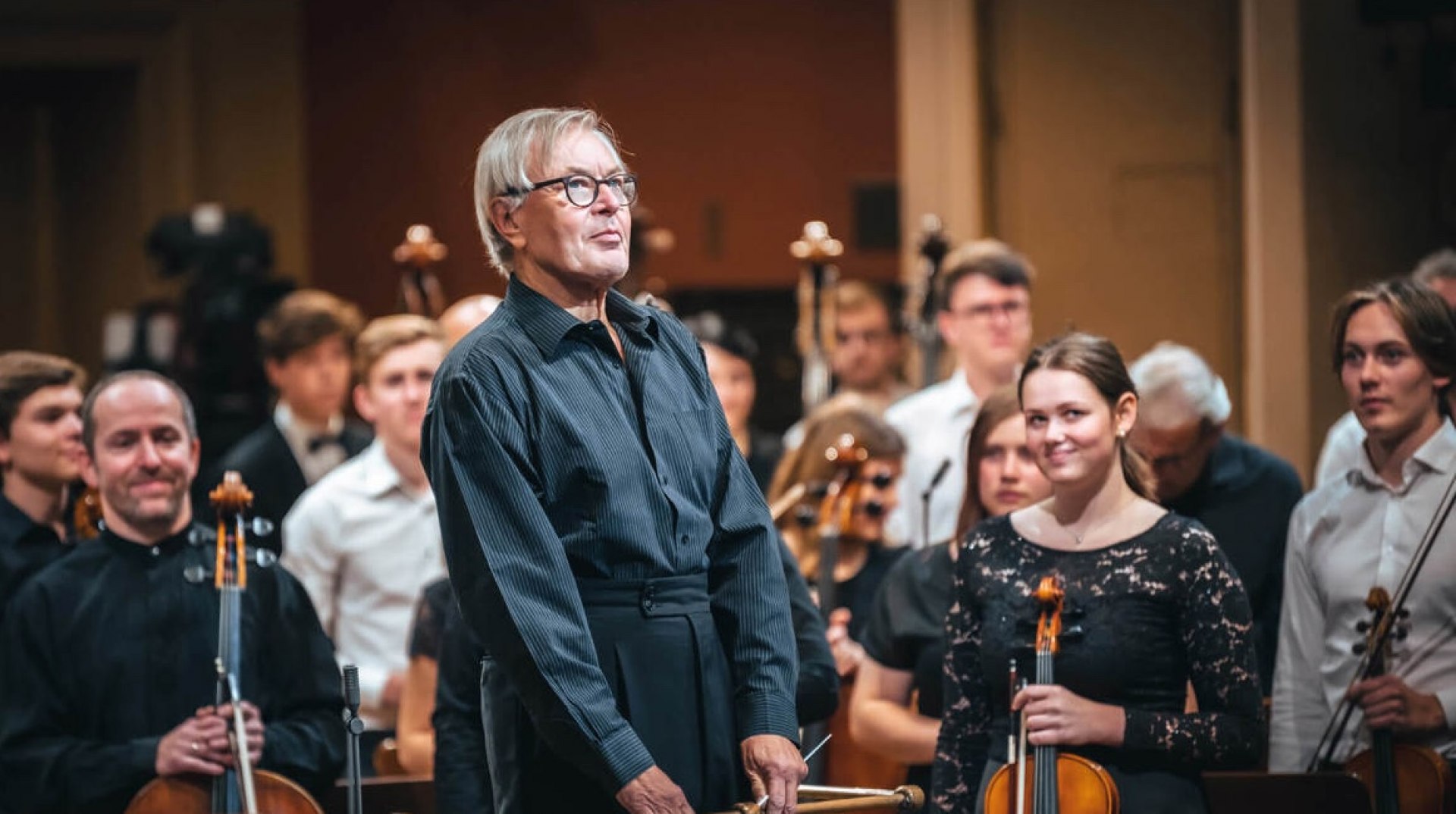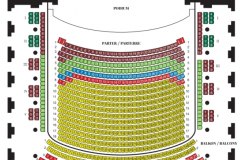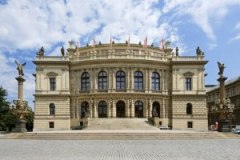Concert of the Joint Orchestra of Music School Pupils
June 2025 | ||||||
|---|---|---|---|---|---|---|
Mo | Tu | We | Th | Fr | Sa | Su |
Concert of the Joint Orchestra of Music School Pupils and Musicians of the Czech Philharmonic
In this project, pupils from elementary schools of the arts all around the Czech Republic encounter their experienced colleagues from the Czech Philharmonic. After half a year of intense preparations, the project culminates with joint rehearsals for a gala concert where the orchestra plays under the baton of Petr Altrichter.
The Joint Orchestra has been created through cooperation between the Czech Philharmonic and the Association of Elementary Schools of the Arts of the Czech Republic (AZUŠ ČR) since 2014. It regularly consists of up to sixty elementary music school pupils and nearly 30 players from the philharmonic. From January until June, they gather for preparatory rehearsals. Under the leadership of the conductor Petr Altrichter and his assistants Ladislav Cigler and Dominik Pernica, the young musicians discover the pitfalls of the individual parts and experience the joy of playing together. Providing inspiration and support on their musical journey are their teachers from elementary schools of the arts and also, of course, players from the Czech Philharmonic. The young musicians also have the chance to become acquainted and make friends outside of rehearsal time.
How did participants from previous years enjoy the experience of the project?
"At first they told us we would be playing music from fairy tales, but nobody told us that we ourselves would be living through a kind of miniature fairy tale here. I have experienced something that probably will never happen again. I got to know lots of new people, and many of them have become friends with whom I can share the joy of music. Of course, in every fairy tale there is some kind of plot twist. Sometimes I feel that each of us has wanted to give up many times, but luckily not one of us did so because of our love for music. Before we had our first rehearsal with Mr Altrichter, we were afraid, but from the moment we met him, we found that there had been no reason to be afraid. The maestro awakened in me an incredible passion for the pieces we are playing and was able to foster in me an even greater musicianship and love of music than I have ever had before. Fairy tales usually have a happy ending, so I hope that ours will never end and that the concert that ends this year-long project will turn out well."
"I only just now realised it's good for us to meet other players. You might think it's just for a year and a few rehearsals, learning some pieces and playing a concert. But maybe it's also about creating a friendly, fun atmosphere, keeping others in mind, and helping each other play. We see we aren't alone in this and it's not about any one person; it's about everyone working together."
"We're approaching the destination of this amazing joint voyage. The journey has taken me a long way and confirmed that I'm riding the right wave; it has taken me to my dream. I feel enormously grateful towards my stand partner, the captain of the violin section, who threw me (and the other sailors) a lifeline, repaired our nets, and sometimes even dragged us up from below deck. It was lovely, and there definitely was not enough of it!"
The programme is based on a musical part but also on a spoken word that will be given in Czech language only. The programme will not be supplied with English subtitles.
Program and cast
Duration of the programme 1 hours
Programme
Felix Mendelssohn Bartholdy:
The Hebrides, concert overture, Op. 26
Jean Sibelius:
Valse triste, Op. 44
Pyotr Ilyich Tchaikovsky:
Waltz from the ballet Sleeping Beauty
Edvard Grieg:
Norwegian Dance, Op. 35, No. 3
Leoš Janáček:
Čeladenský from the Lachian Dances
Antonín Dvořák:
Slavonic Dance, Op. 46, No. 8
Bedřich Smetana:
Polka from The Bartered Bride
Performers
Joint Orchestra of Music School Pupils and Musicians of the Czech Philharmonic
Petr Altrichter: conductor
Rudolfinum
The Rudolfinum, one of the most noteworthy buildings in Prague, was built between 1876 and 1884 according to the designs of architects Josef Zítek and Josef Schulze. Originally intended as a multipurpose cultural building in Prague, the Rudolfinum was inagurated on February 7, 1885. It carried out its mission until 1919, when it was converted to the House of Commons of the Czechoslovak Republic. Concert activity was restored to the Rudolfinum during the German occupation, but full rehabilitation, particularly of the gallery, did not take place until 1992. After a general reconstruction by architect Karel Prager in 1992, the Rudolfinum became the home of the Czech Philharmonic and the Rudolfinum Gallery.
Dvorana – Ceremony Hall
The central space in the gallery portion of the Rudolfinum was designed by Josef Zítek and Josef Schulz as an entrance hall to the art gallery. After 1918, however, this space was converted into a parliamentary cafeteria, and after World War II it served as a gymnasium for the Prague Conservatory. At the end of the 1980s, Ceremony Hall was threatened with reconstruction – but plans to tear down the main staircase to make room for another concert hall did not go through, and the hall retained its original appearance. Of particular interest in Ceremony Hall are 25 empty spaces on its walls, which were originally intended to be filled in with frescos. The majority of the eminent Czech painters, however, boycotted the 1891 fresco competition in protest over the large number of German artists involved in the construction of the Rudolfinum.
 Dvořák Hall
Dvořák Hall
The Czech Philharmonic took the stage in this world-famous concert hall in 1896, performing for its first-ever concert under the baton of Antonín Dvořák himself. The hall remained a space for concerts and performances until 1918, at which time it became a boardroom for the new parliament of the Czechoslovak Republic. The stage and the organ loft became a tribunal (garnished with a statue of President T.G. Masaryk), from which parliamentary leaders presided over proceedings. The hall's original character (and purpose) was restored
in 1940–1942 according to a project conceived by Antonín Engel and Bohumír Kozák, and it has remained in this form through to the present. In accordance with Josef Zítek and Josef Schulz's original proposal, the central visual element in the hall is an organ, which was made in Frankfurt, Germany. During the hall's stint as a parliamentary meeting place, the organ was housed in Brno. When it returned to the Rudolfinum in 1940, its register was extended. Dvořák Hall's final update took place in 1992 when the entire Rudolfinum building underwent reconstruction.
When travelling by public transport, get off at the Staroměstská metro station (Line A), tram stop (trams nos. 17, 18 and 53) or bus stop (no. 207).
Parking is available at the underground parking facility on Jan Palach Square. The facility is not part of the Rudolfinum premises.

 EN
EN DE
DE IT
IT FR
FR ES
ES RU
RU JP
JP RO
RO
 Seating plan
Seating plan 